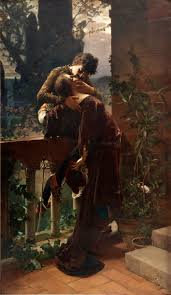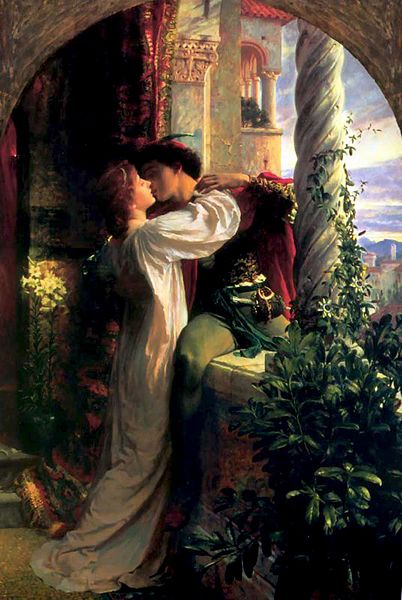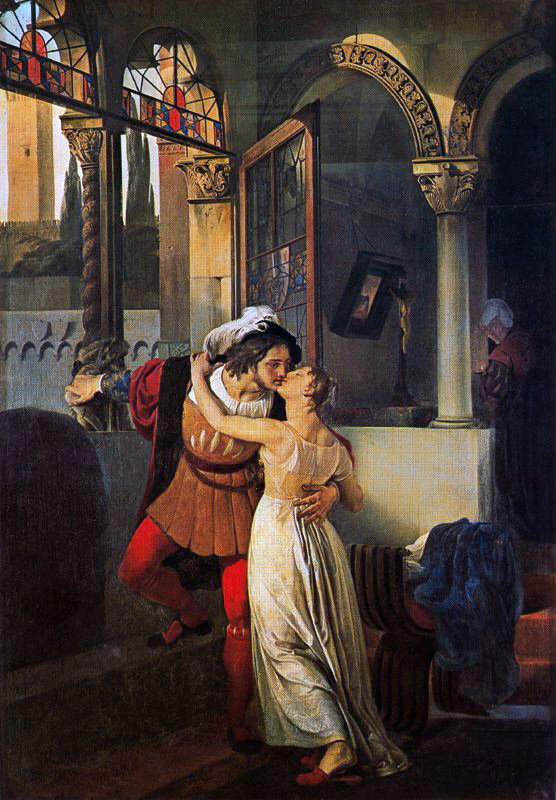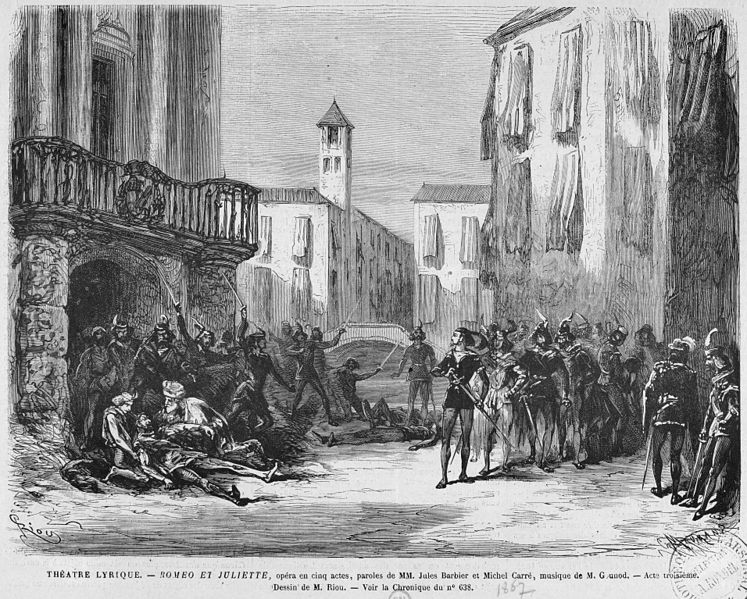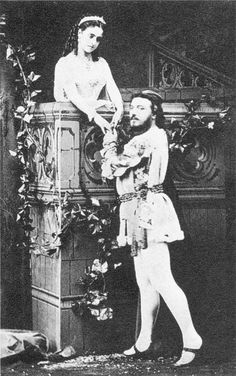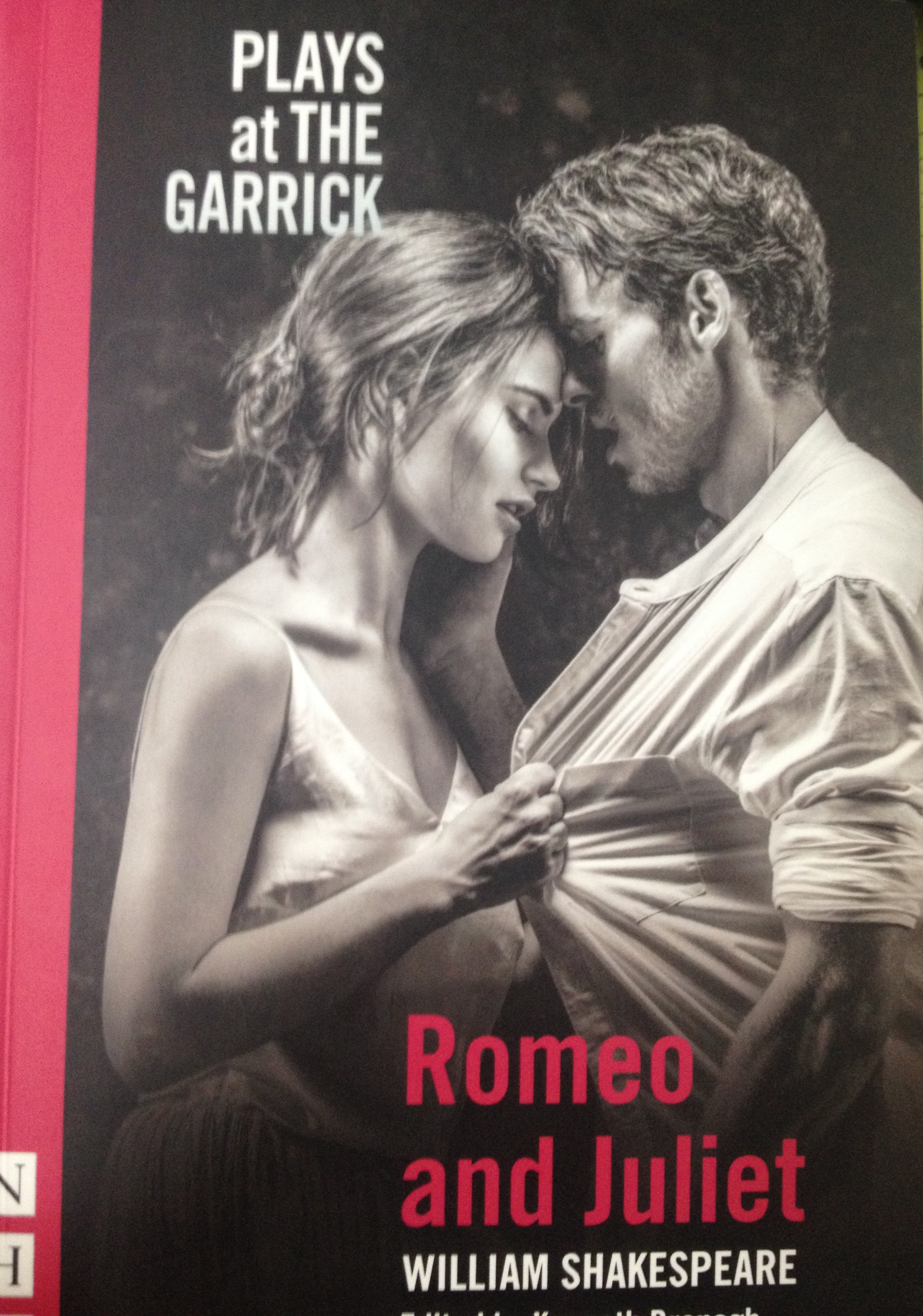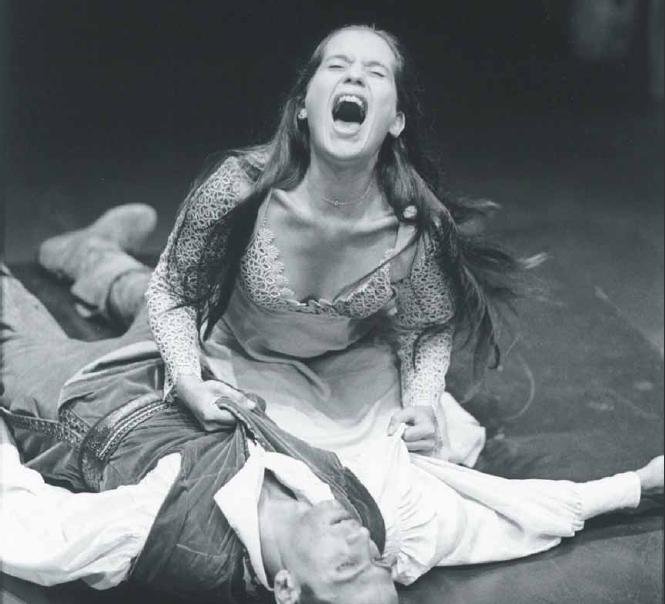How Shakespeare through the Centuries Still Lives On
From Londonhua WIKI
Revision as of 18:04, 26 May 2017 by Mthatfalvi (talk | contribs)
How Shakespeare through the Centuries Still Lives On
|
|
Contents
- 1 How Shakespeare through the Centuries Still Lives On
- 2 Abstract
- 3 Introduction
- 4 Section 1: Background
- 5 Section 2: Deliverable
- 6 Conclusion
- 7 Image Gallery
- 8 References
- 9 External Links
Abstract
The goal for this project was to compare two performances of Shakespeare’s Romeo & Juliet that were performed in London in two different time periods. I used my knowledge in Theater Workshop class and from private past performance creations to compare both performance. Through this research into current and past performances, I found that Shakespeare message still lives on today.
Introduction
The story of Shakespeare's Romeo & Juliet has been told around the world for hundreds of years. It is a beautiful story about two lovers who are torn apart because of their families quarrel. Because this play is timeless in its message of love, war, conflict, fear & pain, there have been many different adaptations and storytelling techniques for this play. The question is even with all of these different adaptations, does Shakespeare's original theme and message still live on? I am going to answer this question by diving into the story, its inspiration, and look at two artistically different interpretations of the play to find the real theme & message that still lives on today.
I researched the performance details, style, costumes, mood, theme and overall message of the two interpretations of Romeo & Juliet. I found through my research two London plays which appear very different in style and technique and used those to compare in depth into the message of the story of Romeo & Juliet. One interpretation of Romeo and Juliet that I found was performed in 1867 as an opera at the Covent Gardens which is now know as the Royal Opera House. Another interpretation was a 1950's style performance done at the Garrick Theatre in 2016. Despite the drastic difference in interpretation and performance, I found that the original message that Shakespeare want to give through this play still lives on.
Section 1: Background
Shakespeare’s Romeo and Juliet Story & Inspiration
To find the message of Romeo & Juliet, I first looked at original play's story for a basis of themes & to outline what to find in my interpretations.
Story
The plot for the play of Romeo and Juliet is about two star crossed lovers who are forbidden to be together by their families quarrel. The two families, the Capulets which is Juliet's family and the Montagues which is Romeo's family, have been quarreling for years. Romeo and Juliet meet at a masquerade ball which is put on by the Capulets and they fall in love at first sight. They eventually decided to secretly marry and plan on running away. Sadly though Romeo ends up killing Tybalt, who is Juliet's cousin, and is sent to exile. Juliet is then forced by her family to marry Paris. She then decides to fake her death, to escape the arranged marriage, so that she could run away with Romeo. Unfortunately, Romeo never receives word that Juliet's death is fake. He finds her dead then poisons himself. When Juliet awakes and see's her Romeo dead she then ends her own life for real. In the end, both families do reconcile but sadly at the cost of Romeo and Juliet's lives.
Inspiration
The story of Romeo & Juliet is a tragic romance that beautifully told but what was the inspiration behind writing it? William Shakespeare wrote Romeo & Juliet around the 1590's. Researches to this day still cannot exactly pinpoint what inspired the play. While researching Shakespeare's possible inspirations I found three main researched possibilities. One being the time period, another being real lovers Shakespeare knew, and another one which is a poem that Shakespeare could have read.
In the time when England was growing in arts & culture, according to a Shakespearean study done on the historical context of Romeo & Juliet, England was suffering from religious persecution towards the Catholics.[1] When Henry VIII became the head of the English church, Catholics were then threatened to either convert to Protestation or die. When Mary I succeed her father after her brother Edward VI, she didn't persecute the Catholics because she was Catholic herself, like her mother, but instead persecuted the Protestants. This was why she got her nickname "Bloody Mary". Then when Mary I died, Elizabeth I succeeded her. Elizabeth I brought back the Protestant church but started to executed Catholics again like her father. It is recorded in Shakespeare history that Shakespeare's father was a Catholic. Now no real proof exists for William Shakespeare's religious views but it is a thought that he did base Romeo and Juliet because of this conflicting time period . [1] Think of the names Romeo (Rome, where the Catholic church is based) and Juliet (Anglican English church of England).
Another possible inspiration is a true story about two real lovers that Shakespeare knew. According to the Luminarium Encyclopedia, Henry Wriothesley the 3rd Earl of Southampton was a close friend to Shakespeare and was a courtier to Queen Elizabeth I. His mother was Mary Browne whose father was the 1st Viscount Montagu (does this sound similar to Montagues). [2] Henry fell in love with a woman named Elizabeth Vernon who was one of Queen Elizabeth I's ladies-in-waiting. Ladies-in-waiting were no allowed to marry and an alliance between Henry & Elizabeth was not favored by the queen especially since both family were different in religious views (Henry's family was Catholic and Elizabeth Vernon's family was Protestant) . Henry was the ward of William Cecil and he already arranged a marriage which Henry refused. When Cecil died in 1598, Henry and Elizabeth then married. This did not make the queen happy and she put them both in jail. [2] They were eventually released and their love story ended happily with a long life and children.
The poem "The Tragical History of Romeus and Juliet" written by Arthur Brooke in 1562 is consider as the most likely inspirational source for the story of Romeo and Juliet. [3] The story plot based in Verone is close to the same as Shakespeare's plot for Romeo & Juliet. Some things are different like for example Juliet is wooed by Romeus two weeks instead of just one night. The words that the characters speak are different in the poem then the play. They do though convey the important theme of timeless romance and tragedy.
Each of these inspirations share a similar theme and message for the story, love, tragedy, conflict, and war. These are the original themes & message that is needed to be conveyed for the story of Shakespeare's Romeo & Juliet to live on through the ages. To find out if this message is living through the ages, I will go into review of two interpretations that are different and give a summary of performance, dramatic elements used & the overall message conveyed through the researched play. The first play I researched was an 1867 opera performed at the Covent Gardens. After a investigation in the 1867 opera, I will talk about the research and investigation on another interpretation that was performed at the Garrick Theatre in 2016.
Shakespeare’s Romeo and Juliet at the Covent Gardens (1867)
According to the annals of the Covent Gardens Theatre from 1732 to 1897, the opera "Romeo and Juliette" by Charles Gounod was performed at the Covent Garden on July 11 1867. [4] Adelina Patti played Juliet and Signor Mario played Romeo. The opera was newly composed by Charles Gounod with words by J.Barbier & M.Carré and received many fantastic reviews at the time. One praising review was published in the Watson's Art Journal in London at the time stating that "it is impossible to speak too highly of the manner at which Roméo e Giulietta is placed upon the stage at Covent Garden Theatre". [5] This opera was a new rendition of the story of Shakespeare's Romeo & Juliet in 1867.
Performance Summary
The opera is composed in five acts and performed in french. Before the first act, a chorus sings the prologue. The first act then starts at the Capulet's Place at a Masquerade ball. Romeo sneaks into the ball with his friends, meets Juliet and falls for her at first sight. The second act is the balcony scene when Romeo woes Juliet. The Third Act starts in the friar's cell where Romeo & Juliet secretly marry. The act continues with Romeo's page going to the Capulets house and fights with one of their servants in combat. The combat grows by the addition of Romeo, Tybalt and others. Eventually, Romeo kills Tybalt. The act ends when Romeo is then banished by the Duke. Act four is in Juliet's bedroom where Romeo visits her for the night then leaves before her father and the friar come to tell her that she will marry Paris. The friar, after Juliet's father leaves, gives Juliet a potion to take to fake her death and she consumes the potion. The fifth and final act is in the Capulets tomb where Juliet is buried. Romeo enters and after believing Juliet is dead, consumes poison. Before the poison kills Romeo, Juliet awakes to finds her Romeo dying from the poison. They speak heartfelt words and, while Romeo dies, Juliet stabs herself with his dagger. Ending the opera with them both dead. [6]
Dramatic Elements
The opera opened in the the late 1800's in Paris, France. The words are sung in french and the style of the opera & costumes is of the Shakespearean time period. The set probably looked like late 16th century Verona, Italy. Gounod did the same approach with Romeo & Juliet as he did with another one of his famous operas called Faust. He toned down the supporting characters in the play. Except for the Friar and Mercutio, the supporting characters are as is said only supporting. Juliet's nurse for example her character is taken down to the point where she is almost non existent. This is Gounod's way of emphasizing the main characters of the opera. Romeo and Juliet are either one of them or both of them in every scene of the opera with entire scenes to themselves mutable times.
The music sets the theme for the opera in every act. The first act starts in a triumphant Forte with goes then to an Andante when the chorus starts singing. This is the ball scene so then the music goes back to a happy upbeat sound. The second act is performed soft and Dolce. Two scenes are in the third act. The first scene part starts with the sound of Dolce music for Romeo & Juliet which then grows to a triumphant Forte with trumpets ending the scene. The second scene is more tense and speeds up growing louder with the chorus. This scene is the fighting scene. The forth act has a beautiful parting sound with Romeo and Juliet together for the first time since their marriage before romeo leaves for banishment. Then the scene goes to Juliet with her father and the Friar. The music for that scene becomes the feelings of Juliet, the sound of desperation and hopelessness. The Friar with a deep bass voice gives hope to Juliet. The fifth act starts with a sad and slow trumpets when Romeo finds his Juliet "dead". The scene is very dramatic and shows the passion that both Romeo and Juliet have for each other. The opera ends with sad triumphant horns emphasizing the end of the classic love story. [6]
Overall Review
An opera is a style of theater performance that can create a more dramatic and heartfelt storytelling experience. By drawing out all of the words in song, the viewer is more captivated and emotional about the story and its characters. Gounod, by making Romeo & Juliet an opera, created a way of telling the story where the audience could become more emotional to the pain and loss of love. He also showed this theme by ending the scene not when the Montagues and Capulets reunite, but when both Romeo & Juliet die. The message that Gounod wanted to send through this opera is the passion of the loss of love, tragedy, drama and the sadness of war & conflict.
Shakespeare’s Romeo and Juliet at the Garrick Theatre (2016)
For the 2016 year at the Garrick Theatre in London, an interpretation of Romeo and Juliet was performed with directors Kenneth Branagh and Rob Ashford. Rob Ashford was also the choreographer in this production. This interpretation got mixed reviews. The Guardian newspaper's, published in London, theatre critic Micheal Billington said that "The whole thing is done with a speed and vigour that ensures we are never bored;..." [7] . Another review from The Independent newspaper's Arts and Features writer Holly Williams, said that "The pair power through with appropriately teenage high drama, but the show never plumbs the full depths of tragedy." [8] Despite mixed reviews, this interpretation of Romeo & Juliet was unique in its style and approach to the classic tale.
Performance Summary
Richard Madden and Lily James played the star roles. The performance follows the same script of the original Shakespeare's Romeo & Juliet but with some of the original lines cut and some added humor. The play though keeps to the same Shakespearean words and sayings. One added part for Juliet is that in Act 1 Scene 5 she sings a song at the party where Romeo sees her for the first time. The characters are kept the same as in the original play however, Mercutio is not a young man but a sarcastic and nicely dressed older guy. This creates an approach to the story where Mercutio is the loyal older friend. A person who speaks from experience and Romeo looks up to him for advice.
Dramatic Elements
The set and period the play is done in is 1950's Verona Italy. The men wear dark suits and the women wear petticoats.The main scenic design looks like a roman building with white marble columns and steps. The whole play keeps this main set and uses props & lighting to change scenes. The background music throughout the play is modern. Different kinds of passion can be shown throughout this interpenetration. The passion of love, war, conflict, fear and pain. There is a theme of darkness and light that is shown through the stage, lighting and characters, especially in the Romeo & Juliet death scene. The white light emphasizes Juliet's white gown is contrasted with Romeo's dark black suit. The supporting characters are given more notice and development. For example, the Nurse, according to actress Meera Syal in an interview, is portrayed as a comic caricature but is shown to be human and have great feelings towards Juliet who she considers as a daughter. [9] Meera Syal portrays the Nurse in Garrick Theatre's Romeo & Juliet 2016 performance. The mood throughout the play changes from serious, to energetic, to passionate.
Overall Review
The message that this performance gives is that the story of Romeo & Juliet is timeless. Throughout the set, music, costumes and speech, the play doesn't stick with just a single time period. The play also gives the themes of different types of passion: love, war, conflict, fear and pain. For example, Romeo speaks with passionate love for Rosaline differently from when he sees Juilet for the first time. He says about Rosaline (Act 1, Scene 1):
""...O, she is rich in beauty, only poor"
"That, when she dies, with beauty dies her store.""
Then says about Juliet:
"...Did my heart love till now? Forswear it, sight,
For I ne'er saw true beauty till this night." [9]
Section 2: Deliverable
After researching the background of each play, I will compare both interpretations. What I will first discuss about the two plays are the differences in performance & dramatic elements, then their similarities.
The Differences
Performance
Both of the performance executions for each interpretation were very different. That alone could be explained by the fact that they were done in different time periods and at different places. However lets look at both performances. In the 1867 interpretation, the performance is written entirely as an french opera. All of the words are sung and even though most of the original writing is kept, a lot of lines for the script were newly written just for this interpretation. For example, in the original balcony scene from Shakespeare's Romeo & Juliet (Act 2, Scene 2) one of the lines Juliet says to herself is:
"Ah me!
O Romeo, Romeo! wherefore art thou Romeo?
Deny thy father and refuse thy name;
Or, if thou wilt not, be but sworn my love,
And I'll no longer be a Capulet.
'Tis but thy name that is my enemy;
Thou art thyself, though not a Montague.
What's Montague? it is nor hand, nor foot,
Nor arm, nor face, nor any other part
Belonging to a man. O, be some other name!
What's in a name? that which we call a rose
By any other name would smell as sweet;
So Romeo would, were he not Romeo call'd,
Retain that dear perfection which he owes
Without that title. Romeo, doff thy name,
And for that name which is no part of thee
Take all myself."[10].
In the opera (Act 1, Scene 2) Juliet sings in french:
"Ah me! - And still I love him!
Romeo, why art thou Romeo?
Doff then thy name, for't is no part,
My loof thee! What rose we call
By other name would smell as sweetly:
Thou'rt no foe, 'tis thy name!" [6]
In the 2016 adaptation, not much of the script changed from the original Shakespeare version. For example, the same part (Act 2 Scene 2) Juliet speaks saying:
""Ay me!"
"O Romeo, Romeo, wherefore art thou Romeo?
Deny thy father and refuse thy name.
Or, if thou wilt not, be but sworn my love,
And I'll no longer be a Capulet.
'Tis but thy name that is my enemy.
Thou art thyself, though not a Montague.
What's Montague? It is nor hand, nor foot,
Nor arm, nor face, nor any other part
Belonging to a man. O, be some other name!
What's in a name? That which we call a rose
By any other name would smell as sweet;
So Romeo would, were he not Romeo called,
Retain that dear perfection which he owes
Without that title. Romeo, doff thy name,
And for that name, which is no part of thee,
Take all myself."[9].
Another point of difference we can see is that the supporting characters how they are portrayed characters in both versions are also different.
The opera in 1867 has only 10 supporting characters besides Romeo & Juliet. The chorus and background non speaking cast do not count. These characters are also not given great emphasis on their growth in character through the story as we see with the main characters Romeo & Juliet. In the 2016 version, there are 18 supporting characters with speaking roles including the main two characters. These characters are also given the opportunity in the play to have human characteristics and to grow in virtue or in hate depending on the character. More emphasis in supporting characters is given in the 2016 interpretation then the 1867 interpretation.
Dramatic Elements
The two interpretations both use very different dramatic elements. To start with style for each, the 1867 interpretation is an opera in 16th century Verona. Music and singing is vital role in character communication and story plot. Music is the main component in delivering the mood, theme and style. In the 2016 interpretation, music is used to set the mood but regular speech is main form of communication. Elaborating and empathizing the spoken words to create the mood, theme and style of the performance.
Some of the costumes are not the same. The men and women in the 2016 interpretation are in 1950's Verona Italy style wear. Whereas the 1867 opera all of the characters are in Shakespearean style clothing.
The sets are in Italy but the 2016 set looks more like a roman marble palace to set the contract of darkness and light. The 1867 opera was Verona Italy in the 16th century.With the fancy dance parlor, balcony and tomb.
The mood lighting is different in both interpretations. For the 2016 play, lighting gives the contrast of darkness vs light as shown in Romeo & Juliet's clothing. Whereas in the 1867 opera, lighting and costumes are just to show the characters and tell the story. Not to give contrast or symbolism.
The Similarities
Performance
The similarities are easier to find then one first thinks. Despite the different time periods, clothing and performance differences, the interpretations have many performance styles and qualities that are used. Besides being performed in London, both plays still keep most of the original Shakespearean wording. Lets go back to the example of Juliet speaks from the balcony. In the original balcony scene from Shakespeare's Romeo & Juliet (Act 2, Scene 2) one of the lines Juliet says to herself is:
"Ah me!
O Romeo, Romeo! wherefore art thou Romeo?
Deny thy father and refuse thy name;
Or, if thou wilt not, be but sworn my love,
And I'll no longer be a Capulet.
'Tis but thy name that is my enemy;
Thou art thyself, though not a Montague.
What's Montague? it is nor hand, nor foot,
Nor arm, nor face, nor any other part
Belonging to a man. O, be some other name!
What's in a name? that which we call a rose
By any other name would smell as sweet;
So Romeo would, were he not Romeo call'd,
Retain that dear perfection which he owes
Without that title. Romeo, doff thy name,
And for that name which is no part of thee
Take all myself."[10].
Now what is Juliet saying? She is wondering where Romeo is and asking him to turn his back on his kin and go to her. Their names are their enemies. Names are just names. That should not keep them apart. Whereas would a "rose by any other name would smell as sweet?" Take all of herself.
In the opera (Act 1, Scene 2) Juliet still conveys this message in french despite the change in words:
"Ah me!-And still I love him!
Romeo, why art thou Romeo?
Doff then thy name, for't is no part,
My loof thee! What rose we call
By other name would smell as sweetly:
Thou'rt no foe, 'tis thy name!" [6]
What does this version of Juliet mean in this case? She still says that she loves Romeo. Where is Romeo? Romeo turn back on your name for names are just a part. Would a rose with any other name smell sweetly? You are not the enemy your name is.
This wording still conveys the message that Juliet is on watch for her Romeo and that names are just names.That Romeo is a Montague means only in name and a rose by any other name would smell as sweetly.
In the 2016 adaptation, most of the original Shakespeare version is kept as in this scene. As shown in the Differences in Performance section above, punctuation is the only difference.
Characters in both plays still keep the same character types. For example Mercutio, is still portrayed as the friend and companion to Romeo. The interpretations give importance to his character growth and development for since he is a major plot changer when he dies & Romeo then kills Tybalt which gets him exiled. The two interpretation don't change the way the characters interact with Romeo & Juliet either.
Dramatic Elements
The 2016 and 1867 interpretations are both is Verona Italy. Both sets keep to the same idea as a balcony, grave and dance floor. Both versions have music in them to help with the mood and style of the performance.
The costumes for Romeo and Juliet for both performances are different but similar. For example Juliet's dresses in both plays are kept light and innocent. Whereas Romeo's costumes are kept masculine and strong.
The mood conveyed in both performances is the same. The passion of dramatic love, war, conflict, fear and pain. Despite being in different time periods and interpreting the play differently both come to the same mood set. Thought the opera, words bring the mood to life as true in the 2016 interpretation. As seen through the possible inspirations of the story, the mood for the play comes out as the highlight of both interpretations. This then must be the message that Shakespeare wants to portray.
Conclusion
What is the message that is found in Romeo & Juliet? That love conjurers all despite human folly. That human conflict and wars are not right in their conquest for justice.That love is the most important thing in the world. Those are the concluding messages that are found through both interpretations. Despite the many differences in performance style and dramatic elements, both interpretations could still portray the same message. Going back to the original story and inspiration, Shakespeare was someone who did not liked the conflicts and wars going on. He was someone who wanted to make people happy but still give them something to take away from a story. This story gives great lessons and messages for anyone in any time period. That is why the message still lives on. Through different interpretations through different time periods, the message of love, pain and passion still stays strong.
There are so many more interpretations that could not have been looked at but should be looked at in future research. To compare movie or other Shakespeare play interpretations would be a great research direction. Besides Romeo & Juliet, other timeless plays like Hamlet or Macbeth could also be used.
Overall the Shakespeare message still lives on and continues to grown through new and different interpretations.
Image Gallery
References
- ↑ 1.0 1.1 Maker, D. (2009, December 05). Romeo and Juliet Historical Context - Romeo and Juliet as a warning to Elizabeth . Retrieved May 12, 2017, from https://shakespearestudy.wordpress.com/plays/romeo-and-juliet-historical-context/
- ↑ 2.0 2.1 Henry Wriothesley, 3rd Earl of Southampton (1573-1624). (2009, August 17). Retrieved May 26, 2017, from http://www.luminarium.org/encyclopedia/wriothesley3.htm
- ↑ Brooke, Arthur. BROOKE'S 'ROMEUS AND JULIET' BEING THE ORIGINAL OF SHAKESPEARE'S 'ROMEO AND JULIET' NEWLY EDITED BY J. J. MUNRO. Ed. J.J. Munro. New York: Duffield and Company; London: Chatto & Windus, 1908.
- ↑ Wyndham, Henry Saxe. (1906). The annals of Covent Garden Theatre from 1732 to 1897. London : Chatto & Windus
- ↑ Gounod's Romeo and Juliet. (1867). Watson's Art Journal, 7(16), 244-246. Retrieved from http://www.jstor.org.ezproxy.wpi.edu/stable/20647340
- ↑ 6.0 6.1 6.2 6.3 Barbier, J., Carré, M., Gounod, C., Shakespeare, W., Sapio, R., Pollack, O., & Moody-Manners Opera Company. (1912). Romeo & Juliet: Opera in five acts. Hull: White & Farrell.
- ↑ Billington, M. (2016, May 26). Romeo and Juliet review – Branagh gives tragedy a touch of la dolce vita. Retrieved May 12, 2017, from https://www.theguardian.com/stage/2016/may/26/romeo-and-juliet-review-branagh-lily-james-richard-madden-garrick-theatre
- ↑ Williams, H. (2016, May 25). Romeo and Juliet, The Garrick Theatre, London: Teenage high drama, but Kenneth Branagh's show never plumbs the full depths of tragedy. Retrieved May 12, 2017, from http://www.independent.co.uk/arts-entertainment/theatre-dance/reviews/romeo-and-juliet-the-garrick-theatre-london-teenage-high-drama-but-kenneth-branagh-s-show-never-a7049321.html
- ↑ 9.0 9.1 9.2 Shakespeare, W., Branagh, K., & Oram, C. (2016). Romeo and Juliet. London: Nick Hern Books.
- ↑ 10.0 10.1 Shakespeare, William. Romeo and Juliet. MIT. Web. Retrieved May 15, 2017
